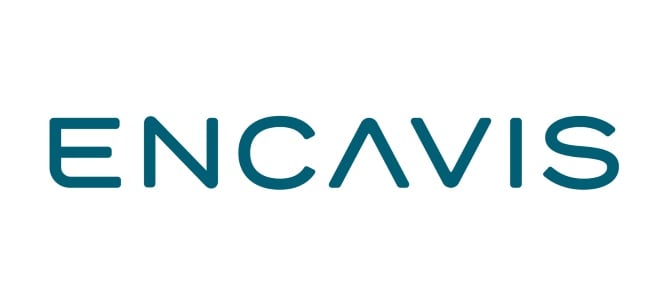Das hier habe ich gerade zufällig beim Suchen nach einem aktuellen Uranübernahmedeal entdeckt (dazu später mehr)
http://www.miningnews.net/...toryid=1131635§ionsource=f74327#
Auch wenn der Artikel offensichtlich noch im Januar geschrieben wurde,so finden sich doch einige sehr gute-und bis dato unbekannte Infos darin: (Man beachte,das dieser Artikel von Marenica in Auftrag gegeben wurde.AREVA wird von Young überhaupt nicht erwähnt-was meiner Ansicht nach Taktik seitens unseres Managments ist )
In diesem Zusammenhang,sollte man auch Youngs Aussagen bzgl. einer eigenen Produktion einordnen ;-)
Uranium project is in a top neighbourhood
Monday, 8 February 2010
PERTH-based uranium explorer Marenica Energy has all the attributes of a newly-listed company. By Ron Berryman - RESOURCESTOCKS*
It has a new name, a new focus and an exciting uranium project in one of the worlds best known uranium districts in the Damara Province of Namibia, which includes Rio Tintos Rossing mine, Arevas Trekkopje project, Paladins Langer Heinrich mine and Bannermans Etango deposit.
The Marenica uranium project is located in the northern region of the Damara Province, about 70 kilometres north of Rossing and about 60km from the west African coast.
The project covers 527 square kilometres and has exhibited high prospectivity for both secondary and primary uranium mineralisation after extensive reverse circulation (RC) drilling, including 28,366m prior to 2008 and 12,215m in 2008 within the priority area and down channel from the main deposit.
Intersections from recent drill results include 14.6m at 363 parts per million U308; 19.8m at 313ppm; 12.5m at 621ppm; 7.9m at 1256ppm; and 13.6m at 406ppm.
Marenica Energy chief executive officer John Young said the weighted mean grade of significant intersections in the final 355 re-probed holes was 196ppm eU308, and the tenor of the mineralisation was a significantly higher grade than the interim resource announced in November 2009.
The downhole geophysical probe survey by Terretec Geophysical Consultants was completed in November and included new exploration drillholes at the Springbok prospect as well as unassessed historical drillholes.
“I think we’ve been building the blocks over the last two to three months and hopefully this will bear fruit in the next two to three months because we have to get the resource right,” he told RESOURCESTOCKS in December.
“We’re due to kick off the scoping study in January and that will probably take an additional two to three months.
“The original resource was calculated in July 2008 and was based on wide drill spacing, and within that there was a core which had originally been drilled by Gold Fields in the late 1970s. Some of that drilling was very tight, but the data from that work was composite-type assay data and couldn’t be used in a JORC-compliant resource.”
Young said the company had re-probed old drillholes for additional information in order to bring the standard of the resource up to JORC standard.
“The original resource had a grade of about 180ppm and our overall resource grade was 140ppm in the inferred category so we knew the core of shallow secondary uranium mineralisation was of a higher grade, so that is what we have been focusing on,” Young added.
“If you’re going to move material into an indicated category you want it to be shallow and of a higher grade, and that is what you focus your scoping study on.”
The Marenica project comprises the Phillipus, Thys and Springbok prospects, with Phillipus on the northwest flank of the northern dome – one of three prominent dome structures in the licence area – and Springbok the main targets.
Extensive drilling has been carried out to follow up on the historic drilling by Gold Fields.
Drill testing of the northern Phillipus zone in 2008 confirmed the presence of at least three layers of mineralised granite-alaskite with grades between 50ppm and 200ppm eU308 over combined depths ranging from 3m to 60m. Mineralogical studies on drill cuttings have since confirmed uraninite as the dominant uranium mineral in the zone.
A total of 1164 drill samples were collected from the RC reconnaissance program at both prospects and results were expected towards the end of 2009.
A program of diamond drilling has also been carried out to provide information for geotechnical, mineralogical and metallurgical testwork on the near-surface paleo-channel resource while a second phase was undertaken to test targets along the southern margin of the dome for the presence of primary uranium mineralisation.
The technical diamond drilling program comprised a total of 31 vertical performance qualifier (PQ) holes for 562m within the resource area, which was designed to test supergene mineralisation in both paleo-channel sediments and weathered bedrock environments.
The company expects to announce another upgrade in January 2010.
“The project, on a technical basis, is doing very, very well,” Young said.
“We’ve got a very good operational team in Namibia and they’ve done a lot of hard work this year.”
He confirmed that the company’s aim was to put Marenica into production.
“Once we have the results from the scoping, which will point one way or the other as far as economics are concerned, we’ll look at it very closely and consider all our options,” he said.
“We’ll consider whether we treat it by heap leach, agitated tank leach, whether we look at a joint venture with a bigger partner, or whether we produce resin onsite and onsell it without producing yellowcake.
“We’ll look at the best way to develop the project. It’s a resource of around 40 million pounds at the moment.
“In its secondary format, as we know it, it will probably never be 100 million pounds, but if we can produce 2 million pounds a year for 10 years it’s not bad going.”
Young pointed out that a number of companies in the same position were looking to produce 1.8-2.5Mtpa.
“So, if we have a 20 million pounds reserve we’ll wrap the scoping around that,” he added.
“We want to keep the capital costs as low as possible.”
One of the important factors in the development of the project is the excellent infrastructure available in Namibia.
The Marenica project is only 180km from the port of Walvis Bay with easy access on sealed roads and power adjacent to the mining leases.
Young said the Namibian government was supportive of foreign exploration and mining, and he saw no problems with the government’s recently announced plans to establish its own state-owned company to look at mining and exploration projects.
“We’re looking at a memorandum of agreement with a Namibian businessman, who is interested in acquiring 5 per cent of the project and he would be our broad-based black empowerment partner,” Young said.
“The Namibian government wants to see previously disadvantaged Namibians benefiting from the mining industry with funds going back to the community in the form of assistance for education, health, social welfare and community development.
“We support this initiative and the company is looking to participate in this scheme by putting some money into a trust fund for this purpose.”
Marenica began life on the Australian Securities Exchange in 1985 as West Australian Metals with a portfolio of various commodity prospects.
Young said the company had decided to focus on uranium and the need for a change of name to better identify this focus.
The flagship project’s name change took effect in December 2009.
* This report, first published in the January/February 2010 edition of RESOURCESTOCKS magazine, was commissioned by Marenica Energy |


 Thread abonnieren
Thread abonnieren

